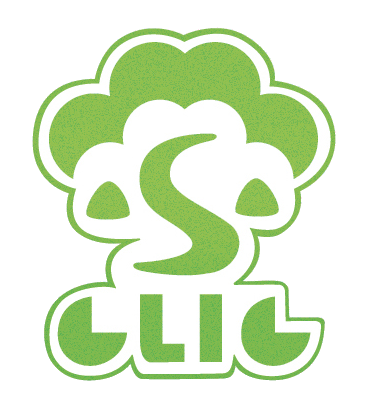Listen to Audio of this topic (Cantonese only)
說到購買保險,相信很多人第一時間都會想起人壽保險。這一節「長者法網智多聲」,就為大家說說人壽保險保甚麼,購買時有甚麼要注意。
人壽保險是保險公司與投保人訂立的合約,一旦投保人過身,保險公司就會根據仍然生效的保單,向指定的受益人支付特定金額。人壽保險亦可以附加其他保障項目,例如危疾或傷殘保險,亦可以有儲蓄成份。投保人需要定期付保費,好像是每個月、每季或每年支付。
香港有很多種類的人壽保險,例如定期壽險、終身壽險、儲蓄壽險、投資相連計劃、傷殘保障計劃和危疾保險等等。
與醫療保險一樣,人壽保險的保單,都會列明特定的不保事項,所以投保人一定要留意保單的條款和細則,了解一下有甚麼是不保的,亦要留意賠償限額。不保事項一些常見例子,包括重大失實陳述、自殺、欠交保費、參與危險活動等等。
如果想知道各種壽險的特點,以及還有甚麼常見的不保事項,可以到長者社區法網文字版參考,想再詳細了解,就要看清楚人壽保險公司提供的壽險內容了。
購買人壽保險之前,有很多東西要考慮的,好像是要衡量個人財政需要、目前是否有購買其他保險、保單合約期的長度、您可以負擔多少保費、以及保單有多少賠償、賠償種類等,還要看看如果退保或提早取回保費是否要罰款。如果經紀遊說您「轉保」,有甚麼潛在風險呢?
即使買了壽險,還有機會改變主意的,因為客戶會有冷靜期,可以在指定時限內,撤銷保單和取回保費。我們在長者社區法網文字版,列出一些購買壽險要注意的事,供大家參考。
無論購買甚麼保險,保險合約是建基於信任,投保人有責任向保險公司披露所有實情和交代所有資料,讓保險公司可以準確地評估風險,保險公司亦相信保單持有人會這樣做,這叫「至誠原則」。如果資料不齊全或有錯,又或是保單持有人沒有遵守保單條款,保單就可能無效了。
保險公司核保期間,如果懷疑投保人違反至誠原則,就有可能惹起爭議。這個情況下,投保人可以翻查保單是否包含「不可爭議條款」,即列明如漏報事實不涉及欺詐,只要投保人還在生,保險公司便不能在保單生效一段指定時間之後,例如保單生效兩年之後,才表示拒絕承保。不可爭議條款可以保障消費者,以免保險公司以受保人違反至誠原則為理由,逃避賠償責任。
除了人壽保險,醫療保險也是很常見的保險,我們在長者社區法網也有介紹,有興趣的老友記,可以到我們網頁了解。多謝大家收聽。
Different types of life insurance
In Hong Kong, there is a wide variety of life insurance contracts available. You need to distinguish among the various products offered by life insurers by examining what the products provide. Some of the more common types of life insurance are briefly summarized below.
Term Life
A “Term Life” policy pays a lump sum upon the death of the policyholder. It does not pay dividends. Term policies are of a fixed duration: 10 or 20 years, for example. If no claim is made, the policy will cease after this time. It provides a protection function but has no cash value.
Whole Life
A “Whole Life” policy can provide a cash value for the policyholder during the policyholder’s lifetime, and also provide a lump sum plus dividends to the beneficiary upon the death of the policyholder. Premiums are usually paid to the insurer at regular intervals, and the premiums are then invested by the insurer to generate dividends for the policy. Therefore, a whole-life policy has a savings and protection function.
Endowment
An “Endowment” policy pays out a lump sum on an agreed date (whether or not the policyholder has died), thus providing a savings function for the policyholder. It also pays a death benefit should the policyholder die before the payout date, thus providing a protection function as well.
Investment-linked Assurance Scheme
An Investment-linked Assurance Schemeis a Life Insurance Policy with benefits linked to the performance of selected investment options, but subject to the credit risk of the insurance company. If the return of the investment options is based on the performance of a corresponding underlying fund selected by the policyholder, then the return on investment is calculated with reference to the fluctuation of the performance of the underlying funds selected by the policyholder. The insurance company owns these assets and the policyholders do not have any rights related to, or ownership of, the underlying assets, but do have ownership of the Insurance policy.
The policyholders must be aware that part of the premium is used to pay for insurance protection, as well as any fees and charges imposed by the insurance company. The rest of the premium is allocated to the investment options chosen by the policyholder.
Disablement Policies
These policies offer a lump-sum payment if the policyholder is permanently disabled due to an accident. These are normally attached as additions to whole life or endowment plans.
Income Replacement Plans
These provide a percentage of the policyholder’s salary to replace his income if he is ill and cannot work for a prolonged period of time.
Also offered are hospital income plans. These offer a fixed cash sum for each day spent in hospital, to help meet the usual household bills which still need to be paid.
Dread Disease
These policies offer a lump sum if the policyholder contracts a critical illness, such as cancer or heart disease. Most dread disease policies also provide benefits in the event of death. It is quite common for these kinds of policies to be added to whole life or endowment plans in the form of a rider.
The above provides only a brief outline of some common types of life insurance that are available in the market. You must read carefully the actual terms and conditions in the policy before buying it.






